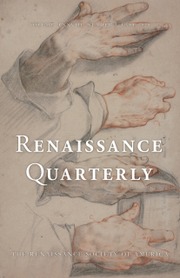Georg Leube’s Relational Iconography: Representational Culture at the Qaraquyunlu and Aqquyunlu Courts is an ambitious and surprising book. In simple terms, it is an analysis of the cultural production of the Qaraquyunlu and Aqquyunlu states, two “Turkmen” sultanates that controlled much of the Iranian plateau and eastern Anatolia during the latter half of the fifteenth century. These courts, neither definitively Sunni nor Shi’i, nomadic nor sedentary, centralized nor decentralized, and largely marginalized by later nationalist historiographies, have proven difficult to approach for generations of scholars. Leube’s contribution stands as one of the most significant ventures into the study of the Turkmen states since John Woods’s Aqquyunlu, and is among the most interesting works on premodern Persianate cultural history in recent years.
Leube performs this exploration by means of an original theoretical framework signaled by the monograph’s title. This relational approach motivates, rather than simply supports, his analysis. Iconography—defined broadly to encompass the whole range of cultural production—is understood as a set of contextually situated performances whose meanings emerge through their relations to other prior or competing performances. Drawing from Asad, Bourdieu, and other theorists, Leube argues that the apparently stable categories through which Islamic societies are customarily analyzed are best viewed as interplays between contextually situated representational performances and their interpretations. Such a relational perspective, Leube claims, can do justice to the in-between quality of the Turkmen states. This theoretical approach grows out of the author’s intuition that a relational view could make sense of the “overwhelming multiplicity” of the semantic layers he perceived upon his first encounters with the Aqquyunlu monuments of southeastern Turkey.
The book’s first section explores the iconography of the yaylaq and qishlaq (summer and winter encampments), the “nexus” of the “performance” of Qara- and Aqquyunlu authority. Leube follows several voices across their representations of these seasonal courts, including court-produced Persian-language writings and European travel accounts. What emerges is a reconstruction of idealized courtly functions that is fluid and free-ranging by design. Leube’s energy is directed toward maintaining a dynamic view of Turkmen courts, which are never seen as stable or concentric. The royal yaylaq tent, surrounded by discrete “functional” social elements, is interpreted as the center of a “fractal-galactic” courtly sphere that mirrors itself at several levels without creating a strict hierarchy. When Leube turns to the qishlaq and the royal palace complexes in Tabriz and Isfahan, he adds architecture and epigraphy to his repertoire of sources. Specialist readers will be grateful for this sustained engagement with Qara- and Aqquyunlu culture and the thoughtful way its diverse and understudied source material is made to yield consistent insights into a flexible system of courtly power and representation.
The second section interrogates the categories of ethnicity and religious affiliation as they apply to the Turkmen courts. Leube highlights an Arabic term expressing the contextual way that ethnically and religiously charged symbols were deployed: munasib al-hal (“as appropriate to the situation”). Turkic, Persian, and Arabic were each deployed to suit particular moments. Leube extends this logic to apply to contextual performance of nomadic, urban, Persian, Turkic, and “normative-Islamic” customs more generally. Narrative and visual arts worked to maintain the flexibility of these categories. Leube also addresses the apparent ambiguity of ruling attitudes toward Shi’i and Sunni orthodoxies symbolized by Timurid and Turkmen coins bearing both typically Sunni and Shi’i slogans, sometimes on the same coin. For Leube, these coins show the creation of an image of universal justice through the strategic appropriation of seemingly contradictory elements so as to reconcile their respective traditions under the “transcendental” justice of the ruler. “Suprafactional justice” is a subtle craft, involving political theorists, astrologers, mystics, and non-Muslim actors. The arguments advanced in this chapter resonate with trends in Ottoman studies, where imperial management of confessional difference is a major focus of interest.
Leube rises to the challenge of his sources’ high linguistic and philological demands and works through an incredible range of Persian, Arabic, Turkic, and European sources. The study’s dedication to its unique methodological framework generates this refreshingly eclectic scope; it is also the source of its limitations. Leube acknowledges that his commitment to the relational view has led him to “eschew a chronological structure of argumentation.” Thus, most readers will need to supplement Relational Iconography with chronologically organized histories of the two dynasties. Leube’s prose, while it effectively communicates complex concepts, often produces paragraphs of unusual density and difficulty. Yet the reader’s patience is always rewarded with a lucid interpretation of poetry or epigraphy that offers depth to our picture of an important setting in world history. Relational Iconography is a truly significant contribution to the study of the medieval and early modern Islamic world.



